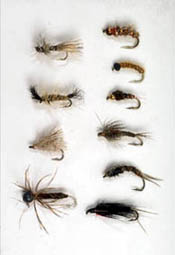

Fishermen catch grayling with small flies - imitations of insects
Materials from the book "Flyfishing the Russian Far East"
Arctic
grayling Thymallus
arcticus
Arctic grayling is one of the most widespread freshwater fish of the Northern Hemisphere. This species inhabits all Siberian rivers and a big part of the North America. Siberian grayling is very vulnerable to the water quality; this fish needs lots of dissolved oxygen and can not overwinter in winterkill lakes. At the same time the species has wide ecological versatility and can be found in streams of any size or gradient, in different types of lakes - from deep and clear ones to shallow tundra waters. I used to meet Arctic grayling also in the estuaries of the rivers flowing into the Polar Ocean. Grayling can live here only close to the surface, in fresh water, not far from banks. In the same areas near the bottom you can catch flounder, sea sculpins and other salt-water fish.
East-Siberian
subspecies of Arctic grayling (Urak River). Note the strips at the dorsal fin and
red tail. 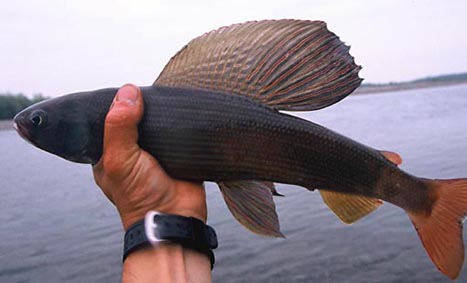
There are four universally recognized subspecies of Arctic grayling: West-Siberian, East-Siberian, Kamchatka,
and American (Alaskan) subspecies.
West-Siberian grayling lives in great basins of Ob and Yenisei Rivers. East-Siberian subspecies inhabits the
Polar Sea basin - from Lena River to the Eastern Chukotka. In most of river basins of northwestern part of
Okhotsk Sea coast live also the East-Siberian grayling. The Kamchatka subspecies of Arctic grayling inhabits
Kamchatka Peninsula, Penzhina and Anadyr basins; Taui and Yana Rivers near Magadan. The main range of the
American subspecies of Arctic grayling is Alaska and Canada. In Asia there are only some lakes and small
rivers with this fish - right near the Bering Strait. There is quite a big difference between all subspecies
of Arctic grayling in shape of head and body, and by the patterns of the dots and stripes on the dorsal fin,
etc. There is also quite a big difference in biology of these subspecies.
Kamchatka
subspecies of Arctic grayling (Anadyr River)
American
subspecies of Arctic grayling (Chukotka, Koolen Lake near the Bering Strait)

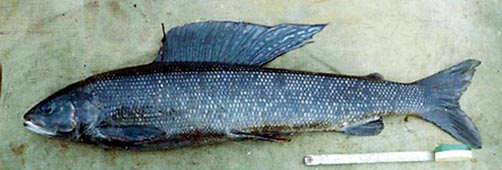
There is a different species of grayling, which inhabits huge Amur River basin, Uda and Tugur rivers to the north from Amur mouth, and some streams of the northwestern Sakhalin. It is also numerous in many streams of the coast of the Sea of Japan between the Amur River mouth and Vladivostok. Typical Amur grayling looks quite different from Arctic grayling; it has a big mouth, a “scoop-like” lower jaw and a comparatively small dorsal fin with two bright red stripes along its upper edge. In Amur there are also other forms of grayling; some of them could belong to new species. In former time all graylings from Amur basin were considered to be one species. Now some scientist think, that in Amur drainage there are several "good" species of grayling.
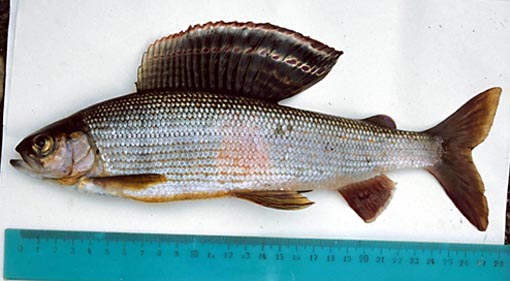
"Lower-Amur-type" grayling from the Anyi River (Photo A.Antonov)
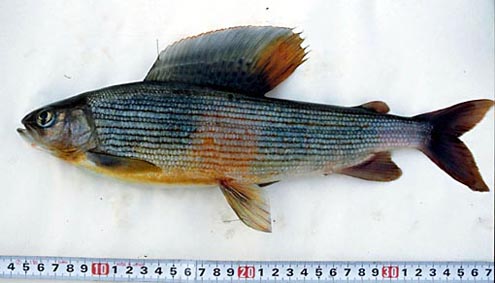
"Yellow-spotted" grayling from the Anyi River (Photo A.Antonov)
Other articles posted at the site
Home Fishing Flies Fishing tours Books & Articles About the author
FLYFISHING, OUTDOOR TRIPS, WILDERNESS PHOTOGRAPHY